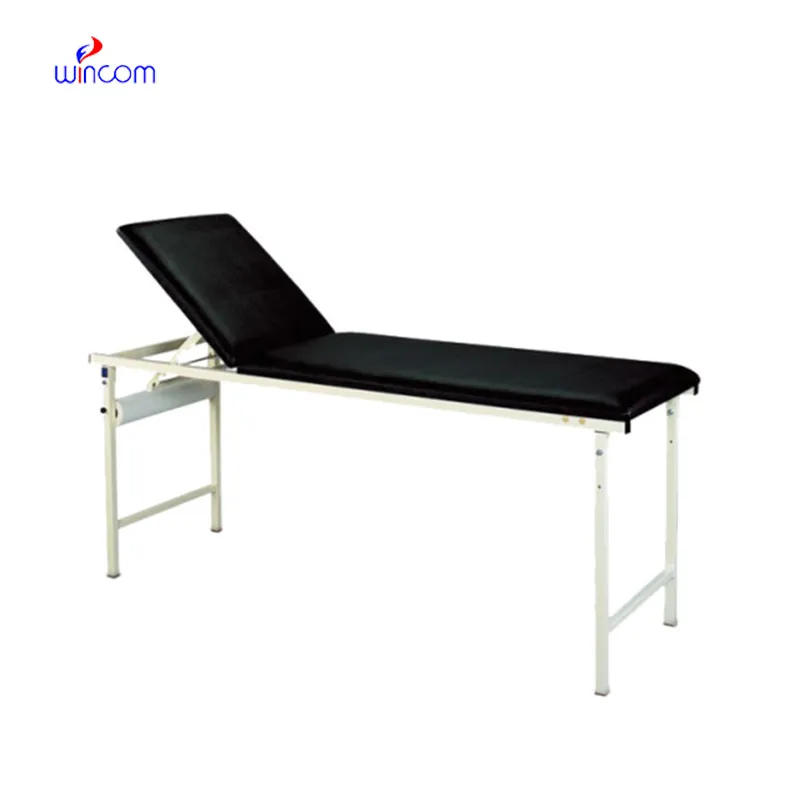
Blog
In a post-pandemic healthcare world, sanitation standards have never been more critical. A poorly maintained examination bed can become a breeding ground for harmful pathogens, leading to cross-contamination and potential infection outbreaks. Proactive maintenance and sanitation should be viewed as essential investments in healthcare excellence rather than optional tasks.
Routine maintenance ensures that mechanical and electrical components function optimally. From adjustable backrests to hydraulic lifts, every moving part contributes to patient comfort and caregiver efficiency. Proper upkeep prevents costly breakdowns and extends the lifespan of the equipment—saving hospitals thousands in replacement costs.

Not all cleaning agents are created equal. Always use EPA-approved hospital-grade disinfectants that can eliminate viruses, fungi, and bacteria without damaging upholstery. Avoid harsh bleach-based solutions that may degrade the surface over time.
Create a daily sanitation checklist for staff to follow after each patient use. This includes wiping all touchpoints, disinfecting handles, and ensuring no residue is left behind. Documenting cleaning routines enhances accountability and compliance with infection control standards.
Microbes often hide in the seams and cracks of the Examination Bed’s upholstery. Use soft brushes and microfiber cloths to reach tight spaces. Regular inspections can help spot small tears or cracks before they become hygiene hazards.
Even the best disinfectant won’t work if applied incorrectly. Training your staff on contact time, dilution ratios, and wiping motions ensures effective sanitation. Proper technique minimizes cross-contamination and improves cleaning efficiency.
In addition to daily cleaning, schedule monthly deep-cleaning sessions. These should include dismantling removable parts and disinfecting the frame, joints, and electrical controls. Consider outsourcing this task to professional medical equipment cleaning services.
Frequent inspections identify early signs of wear, rust, or loose fittings. Addressing minor issues early prevents breakdowns that could disrupt clinical operations.
Lubrication keeps joints and hinges operating smoothly. Use medical-grade lubricants approved by the bed manufacturer to avoid corrosion or malfunction.
Modern Examination Beds often include hydraulic or electric lift systems. Periodic testing ensures patient safety and smooth operation. If you hear weird sounds or notice things moving slowly, it's time to get a professional check it out.
Delaying replacement parts can compromise safety. Keep an inventory of essential components such as wheels, actuators, or control panels. Swift replacement avoids downtime and potential injury.
These errors often lead to early equipment failure and increased infection risk. Avoid them by adopting a structured maintenance plan and staff training program.
1.How often should an examination bed be cleaned?
Ideally, after every patient interaction and once more during end-of-day sanitation routines.
2.What disinfectants are safe for use on examination beds?
Use hospital-grade, non-corrosive disinfectants approved by the EPA or equivalent health authorities.
3.Can damaged upholstery affect patient safety?
Yes. Cracked or torn upholstery can harbor pathogens and compromise hygiene standards.
4.How long does a typical examination bed last?
With proper care, a high-quality examination bed can last between 7–10 years.
5.Should maintenance be done in-house or outsourced?
Routine cleaning can be in-house, but technical maintenance is best outsourced to certified professionals.
Maintaining and sanitizing your examination bed is really important for patient safety, smooth operations, and saving money in the long run. By implementing these actionable tips, healthcare facilities can uphold the highest hygiene standards while extending the lifespan of their medical equipment.
E-mail: [email protected]
Tel: +86-731-84176622
+86-731-84136655
Address: Rm.1507,Xinsancheng Plaza. No.58, Renmin Road(E),Changsha,Hunan,China